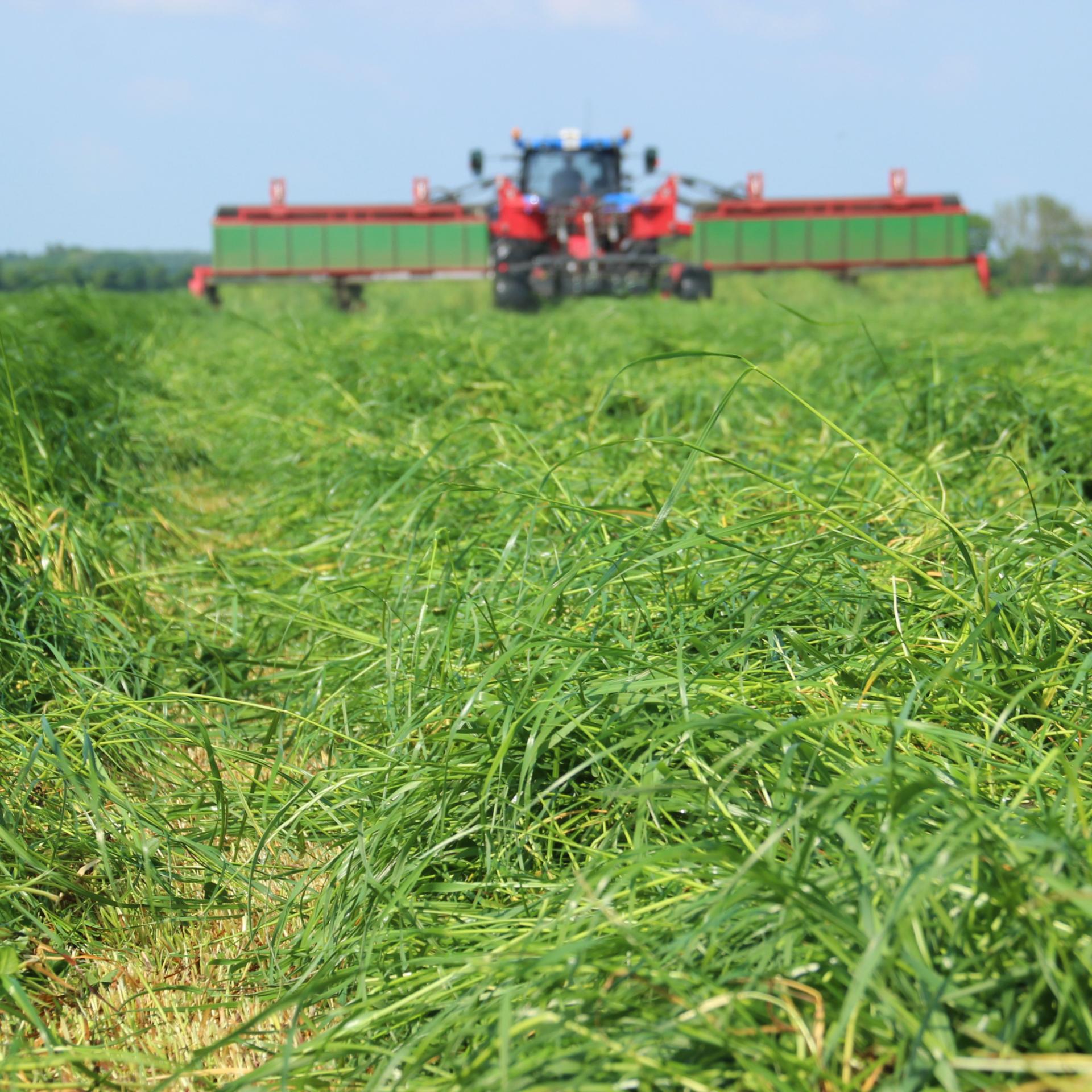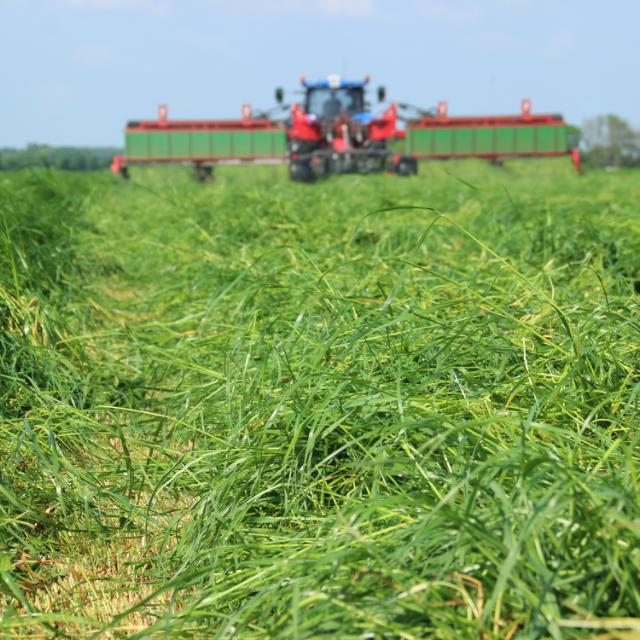Grass-growing strategies for an era of change
Times are changing: the climate is shifting and rises in commodity prices seem relentless. For farmers, this is the era of rapid adaptation. This is the time for new techniques to cope with spring and summer droughts; to counteract rising costs for cereal, protein, energy, and fertiliser; and to avoid supply-chain disruption.

Farmers who are willing to rethink the way they operate can still do well. If you focus on self-sufficiency in forage and fertiliser production, you can keep costs down and revenues high. So these are our top three strategies for riding the storms of climate change and sky-high commodity prices.
1. Renew tired grassland for long-term forage gains
Autumn 2021 provided another season of unpredictable weather. It came after a series of spring and summer droughts. None of this has been good for grassland renewal, the single best treatment for old, tired, and under-performing swards. For renewal, the best time is now, before another round of unsuitable growing weather: hot and dry, rainy and wet, or early and strong frost. Spring is here and rapidly warming soils are still moist enough to establish new swards or to overseed old ones.
For faster establishment of new or overseeded swards, hybrid ryegrasses and PLUS grasses are good for high-value forage production. Hybrid ryegrasses are especially useful because they produce an early yield. They thrive on a minimal increase in soil temperature while making the most of the early spring moisture. They perform so well, they often provide you with a high first cut before the first spring drought.
Rye grass PLUS might be an even better choice for both long-term and short-term swards. They combine the genetic material – and the best characteristics – from ryegrasses and fescues. This combination of high-performance features makes them ideal for producing a good, high-quality yield through times of severe and unpredictable weather.
Both types of grasses are recommended components in mixtures for sowing new swards or overseeding old ones. And both can be sown this spring to achieve quick gains by late summer or autumn, and for early spring 2023. Sowing PLUS grasses will make you more self-sufficient in feed for years to come. And the savings that home-grown PLUS grasses make on bought-in feed will pay for the seed many times over.

Rapid adaptation starts now
The time for change is now, when farmers are under intense pressure from world events beyond their control. By sowing PLUS grasses, clovers, or annual ryegrasses this spring, you are investing in the years ahead. New seed creates fresh routes to self-sufficiency and gives you a vital cushion against rising prices, unreliable weather, and the unpredictability of global markets.
And if you’re still not sure how to get the most out of your seed in challenging times, talk to your nearest DLF representative.
2. Nature’s own source of free fertiliser and protein
Fertiliser prices are at levels not seen since the 2008–09 financial crisis. The easiest way to avoid them is to adopt more sustainable and profitable ways to maintain or increase field outputs. Whether your focus is on forage grass or on a following main crop, natural nitrogen-fixers could be the solution.
Clovers are a hugely popular source of nitrogen. In a single year, clovers can produce between 100 and 300 kg nitrogen per hectare. Since this is nitrogen that comes free from the air, you should re-establish any old swards suffering from a lack of clover. The simplest approach is to sow a grass-seed mixture containing a high percentages of clover. Clovers don’t just provide nitrogen for their companion grass crops, when they decompose they release more nitrogen which feeds the following season’s main crops.
Fertiliser cost-savings are just one of the benefits of growing clovers. Clovers produce plenty of protein which saves you the cost of bought-in concentrate. They’re highly digestible too, which improves your feed intake and increases your milk and meat production.
Another option for high-value main crops is to under-sow with white clover. Or you could use clovers in greening and cover crop mixtures to the extent possible. Careful under-sowing of white clover in maize or cereals won’t harm your main crop, but it will supply nitrogen in its first year of growth.
You can also use clovers for greening or cover crops, which is another way to reduce your reliance on commercial fertiliser.
ROKALI, our high-performing annual clover, is often used as a quick-fix source of nitrogen. ROKALI establishes fast in spring or late summer after the main crop. Its ability to fix nitrogen extends beyond the year of establishment: it continues to create nitrogen in early spring of the following year before eventually being ploughed-in to decompose and release yet more nitrogen for the main crop. Sowing ROKALI fertilises your sward, improves its feed quality, and raises its protein content. It’s a win-win-win crop.
3. A fast fix for a shortage of feed
A quick and reliable way to fix a deficiency in feed production is to grow annual ryegrass. It doesn’t matter whether the shortage occurred because swards were damaged by climate change or given over to the production of other, temporarily more profitable crops; annual ryegrass can fill the gap.
You can use annual ryegrass for intercropping, for greening, or as a cover crop that you can harvest for quality feed. The best times are spring, when you can under-sow it within a main crop, and autumn, after the main crop when it’s good for greening or as a cover crop. The first option gives you a good yield of high-quality grass in early spring; the second produces good feed just before the onset of winter.
Using annual ryegrass for intercropping provides an excellent supplemental source of feed without missing out on the income earned from other main crops.
Annual ryegrasses are a quick route to increased self-sufficiency and a buffer against price increases in bought-in feed. They perform even better when sown with annual clovers such as ROKALI. The clover fixes nitrogen, adds protein, and improves digestibility.